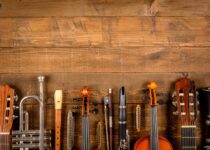Music is a fantastic way of expressing yourself to the world. However, there are many instruments out there, and choosing what you want to learn can be daunting for new musicians.
If you’re looking to start learning a musical instrument, you might be hesitating because you’re worried that it may be too challenging for you. If that is the case, then you don’t need to worry. You can play almost any musical instrument proficiently if you practice enough.
Learning the proper techniques at the right time is key to a successful musical journey. Having a music tutor can significantly reduce the time it takes and also helps improve your efficiency when learning. You can ensure that whatever you learn stays in your memory with a routine too.
You should start your journey with an instrument you like. Otherwise, there’s no point in even trying. However, you should choose an instrument that is also easy for you to start learning with. Nailing those first few chords or melodies will give you a dopamine rush to keep you motivated.
Here is a list of the top ten easiest instruments to learn ranging from percussion instruments to stringed instruments and even digital tools.
Post Contents
1. Ukulele
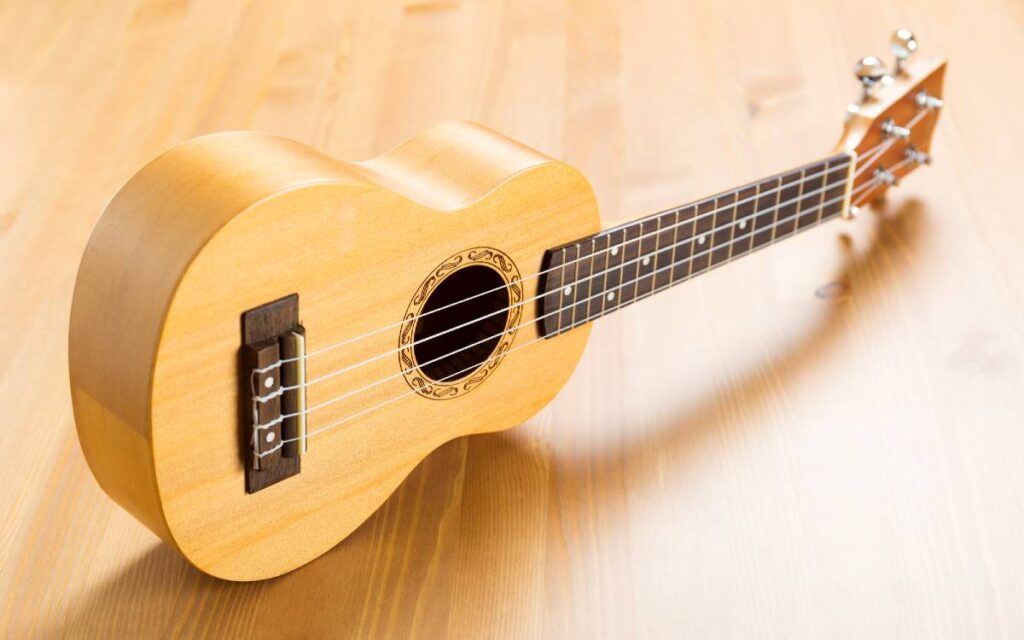
This is a simple instrument to start with as it’s easy to learn, inexpensive and enjoyable to play. It’s also a significant first step if you’re looking to learn to play the guitar.
The ukulele only has four strings compared to the guitar’s six, making most of the chord shapes much more manageable.
Even though the ukulele is smaller and has two fewer strings than the guitar, it still packs a punch. By just learning a few chords, you can start to play some of your favorite songs.
The ukulele is used in various genres ranging from rock songs to blues and pop. You’d be surprised what songs translate amazingly to the uke.
The ukulele is a great instrument to learn at any age and come in several sizes, including concert, tenor, and soprano. It’s easier to carry around due to its smaller size than most other instruments.
The initial learning process is also less painful than learning the guitar. The strings are a bit easier on the fingers, as beginner guitarists haven’t yet developed calluses in their fingertips.
2. Harmonica
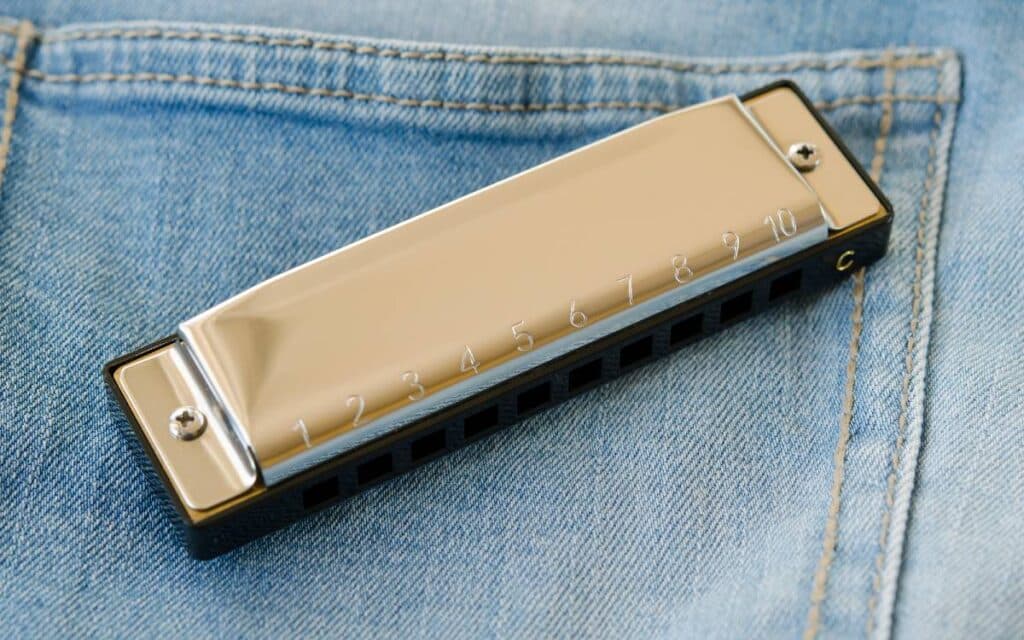
The harmonica is one of the most accessible instruments to start with, especially if you’re just beginning your music learning journey. It’s one of the easiest instruments to learn for adults and children alike.
The harmonica works on the basic principle of breathing in and out to create different sounds. The placement of the harmonica on your mouth, the strength of your breathing, and hand movements determine the sound of the harmonica.
You don’t need to have prior music knowledge to start. And since it’s a basic instrument, you can quickly begin to get the hang of it. Another significant advantage over other instruments is that the harmonica is always in “key”, so it will always sound good.
Once you start getting the hang of the instrument, you can learn more advanced techniques that can add a lot of depth to your sounds, such as bending and tongue blocking. After you know those, you’ll make your own music in no time.
It’s a versatile instrument to learn and is often heard in country, blues, folk, and rock music. However, recently the harmonica has surged in popularity in a lot more genres.
It’s not only easy, but it’s enjoyable to play, too. It’s very portable and inexpensive. This is the smallest instrument on this list as you can just carry it in your pocket. It removes the necessity to take a bulky instrument along with you.
3. Piano
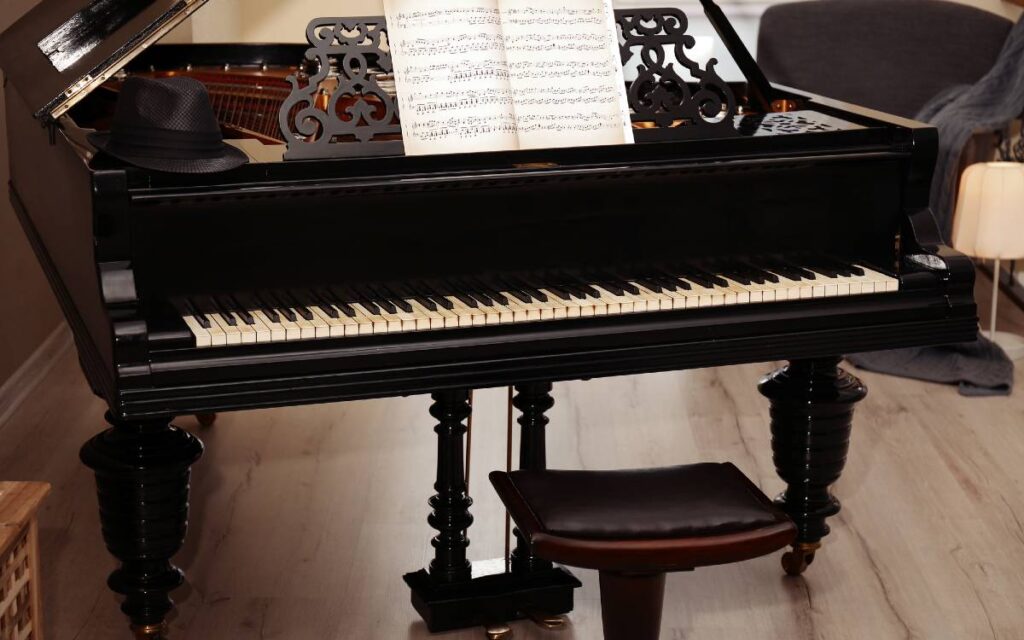
The piano may seem incredibly daunting to start with due to the sheer number of keys on it. However, the piano is actually one of the easiest-to-learn instruments for adults.
Of course, that is not true if you aim to be a virtuoso (in which case it’s one of the hardest instruments), but simple chords, melodies, and basic piano skills can be very achievable when you start to learn piano.
Not only that, the piano is a great way to lay the foundation if you want to start learning other instruments. As you learn to read sheet music, you will begin to gain the skills needed to read music on most other musical instruments.
The concepts you will learn when learning to play the piano are universal, meaning that these concepts can be carried over and applied to just about any other instrument. So once you decide to learn another instrument later on, you won’t have to restart your learning process from the first step.
One huge advantage in choosing to play piano as your preferred musical instrument is that the notes are laid out on the piano in front of you. You may be able to play the wrong notes, but you won’t be able to play the notes out of tune like you would if you were to play a woodwind or brass instrument.
As the piano is one of the most popular instruments globally, there isn’t a shortage of learning material and songs to play on the piano.
You can also opt for a digital keyboard rather than a piano for a more accessible and inexpensive learning experience. The piano and an electric keyboard vary slightly regarding the number of keys and their range. They will still have all the notes on a smaller keyboard, but not every octave that a larger piano may offer.
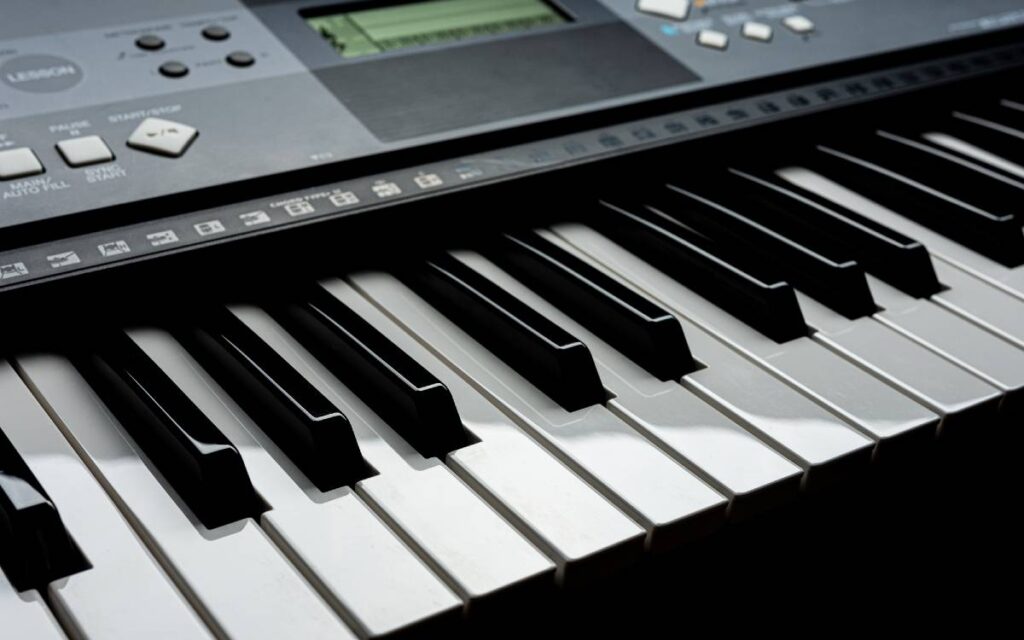
Usually, a piano has 88 keys, while an electric keyboard may have as little as 49 keys. However, the arrangement of the keys is still very similar to the the keys on the piano. This means you can carry over the hand movements you learn on a piano to the electric keyboard and vice versa.
Piano lessons are a great way to start learning the basics of music theory as you can easily associate the notes you’re reading with the piano keys in front of you.
The piano is an incredible instrument to learn, especially as a beginner, because of its beautiful sound and potential for ongoing learning and growth.
Like any instrument on the list, the piano is elementary to pick up and start learning, but it takes a long time to master completely.
4. Drum Kit
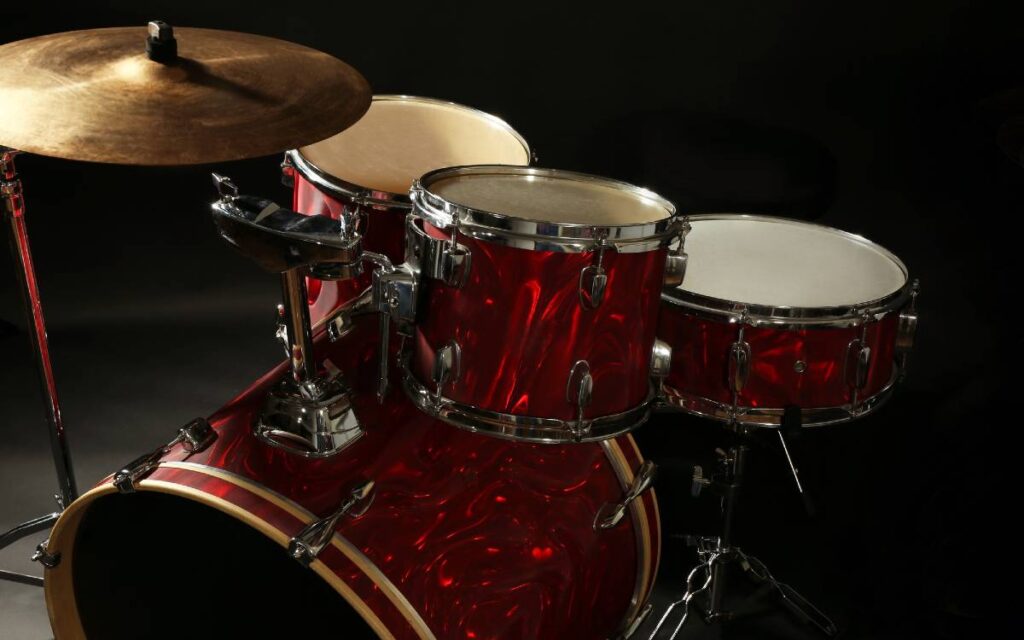
Drums are some of the oldest instruments known to humans, and they have been a significant part of most musical genres out there.
The best part of learning to play the drums is that you can start with simple drum beats and progress to advanced rhythms and complex drumming patterns on a full drum kit.
However, the drums tend to be very loud and may bother the people around you. If this is the case, you can also buy an electronic drum kit. These are great for in-home use as they can be played quietly.
Not only that, but the electric drums also allow you to change the sound of your drums with just the touch of a button.
You can have several kits at your fingertips ranging from orchestral percussion to rock to funky hip hop. With a wide variety of styles, you can always try out a new and authentic sound, and a massive array of musical styles.
Connecting your electronic drum set to computers and software, external sound modules, samplers, and other electronic musical instruments through MIDI helps to extend your sound palette and recording possibilities.
MIDI is a standard for linking digital music instruments to computers that are used all around the world. We’ll talk more about them soon.
Playing the drums helps you relieve stress and tension, and it also offers a pleasant way to enter the world of music. The fundamentals of drumming are straightforward to learn, but mastering the drums is different.
A standard drum kit is a very fun instrument that allows you to not play wrong notes. It’s hard to sound bad once you have your timing sorted out too. And, let’s face it, a drum solo is everyone’s favorite instrumental break.
5. Guitar
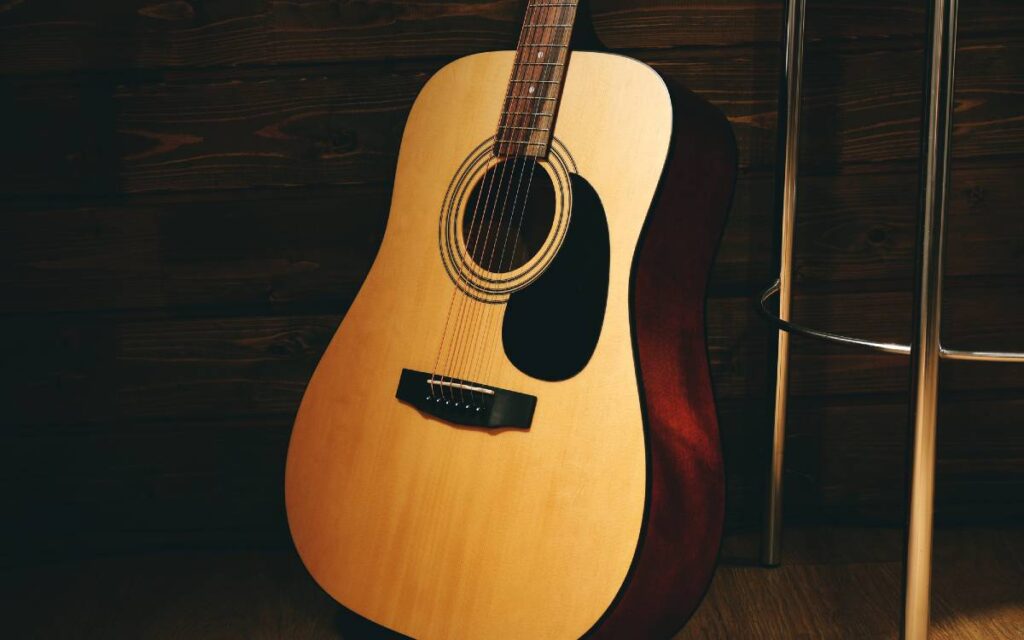
Even though it’s easier to learn the ukulele before jumping to the guitar, most people tend to start their musical journey with a guitar simply because it is such a popular instrument.
If you’re someone who has no trouble picking up patterns, then the guitar can be a perfect option for your learning, and you should be able to jump in playing songs in no time. But, learning the guitar will take a lot of consistent effort and determination and some pain at your fingertips.
This is a great instrument to start learning as it can help you learn a different form of musical notation. Learning how to read guitar tablature is easier than sheet music. You could consider it a bit of a short cut for learning to read music.
Guitars come in various sizes and shapes, and they range from electric to acoustic or even bass guitar. However, as a beginner, we recommend going for an acoustic guitar.
6. Violin

The violin is also another popular choice of musical instrument for beginners as it is suitable for children as young as five years of age. It takes a little time to start to get a good sound on the violin. However, mastering the sound on a violin is a different story.
You won’t sound like those epic violins in movie soundtracks for a very long time. The first few months will be very annoying and hard as you will hear a lot of buzzing in the sound and sometimes an annoying scratch and pause in between.
However, proper music lessons can be a great way to set yourself on the right track. This isn’t the easiest musical instrument to learn on this list, but it can be gratifying to understand once you get over that initial hump.
As a beginner violinist, it’s best to start by spending time day on scales. Most beginners tend to skip this and jump straight to learning to play a song they like. However, doing this can ensure you have a solid base to start with.
It’s a great choice if you’re looking to learn to produce classical music, and the violin has several social, mental, and physical benefits. In children, the violin has been known to develop social skills and improve some children’s fight with psychological disorders.
7. Digital Audio Workstations

Digital audio workstations have risen in popularity due to the simple fact that modern music production is often achieved digitally.
A DAW is a hub where you can make music from the comfort of your seat without the hassle of having to learn a ton of instruments. It can be explained as the modern equivalent of a tape machine, console, and a room full of outboard gear neatly packaged in software.
You can record live vocals in a DAW and add effects through plugins and play virtual instruments using MIDI. There are a number of DAWs with different features, so you won’t have trouble finding one that suits your needs.
Most of the time, you would be using a MIDI controller that looks like a keyboard, but there are plenty of other inputs that can work with a DAW like DJ controllers, launchpads, and digital drum pads.
There are a number of DAWs by different companies, each with its own set of features. Some of the popular DAWs are:
- Cakewalk by BandLab
- Reaper
- Logic Pro
- Ableton Live
- FL Studio
Digital audio workstations have nearly endless options to help you create the sound you want. Although DAWs aren’t your traditional musical instruments, that does not change the fact that these are tools that can help you make music.
8. Flutes and Recorders

This instrument is one of the “harder” instruments to learn in the list. Even though it may seem a more difficult instrument to learn, it’s pretty easy once you get the hang of it.
The basics of understanding the flute aren’t challenging, and a beginner with no prior history of music can still pick up and start playing the basic notes quickly.
Like most of the instruments we talked about in this list, once you have a basic understanding of the instrument, you can move on to more advanced concepts to truly master the flute. This isn’t the type of instrument you can outgrow quickly.
The hardest part of learning the flute is learning to breathe the correct way. The notes aren’t placed in a hard, learn the way, but in the beginning, you will find yourself getting out of breath fairly quickly.
Not only does the flute have a beautiful sound, but it also has several health benefits too. The flute promotes good posture, proper breathing, finger dexterity, and it helps improve core strength.
You can also start with a recorder as it doesn’t take a lot of breath to produce a sound, which makes it a more accessible instrument to learn for older people or very young children. The recorder is typically taught in primary school as it’s often considered the easiest instrument to learn.
Like the flute, there are different recorder models at different pitches (soprano, alto, and tenor). But if you can play one pitch, you can play all of them.
Recorders are usually made of plastic or wood. We recommend going for a wooden one as it tends to have a richer sound. Recorders are incredibly cheap, and the best part is that you can upgrade to playing the flute as both have similar finger movements.
9. Other Percussion Instruments
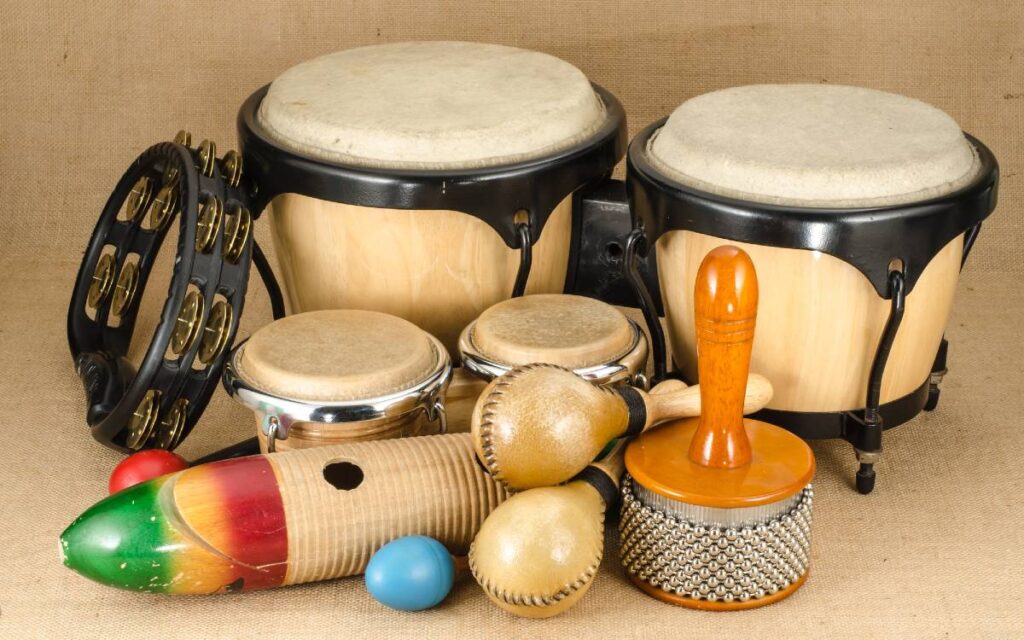
If you lack the confidence to learn a tuned instrument, opting to learn a percussion instrument is a great way to jump into learning music, and they have a very primitive and organic feel to their sound. Even after a few hours of learning, you could jump into playing in a drum circle.
There are several percussive instruments from timpani, xylophone, cymbals, tambourines, and gongs, which means that you will always find one that you can enjoy playing.
They are straightforward to start with as you can’t play any wrong notes on a percussion instrument which is why many view this orchestral family as the easiest musical instruments to learn.
Drum circles are amusing, popular social events making these the best instruments to learn for youngsters and older people alike. Even if you don’t have someone you can play with, you can always just put on your favorite song and play along to the music.
As hand percussion is often some of the most straightforward instruments, it can be one of the most accessible for all new players.
10. Saxophone
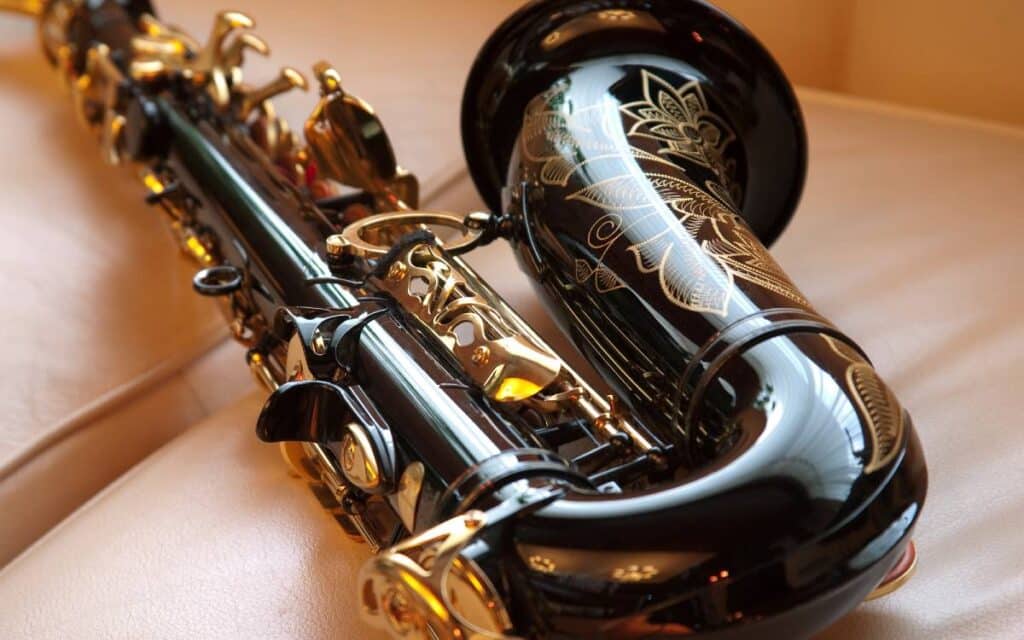
The saxophone is usually considered the easiest jazz instrument to learn for beginners as you don’t have to “hear the note” to play it. Mostly, you just have to place your finger on the correct keys to play a note.
It’s still far from the top of the easiest instruments to learn. You’ll need consistent practice to get your finger independence and some quality learning materials to hit your musical goals related to playing the sax (or any woodwind family instrument for that matter).
There are mainly four different types of sax. These include alto, soprano, baritone, and tenor. The keys are designed for ease of use, and you can quickly get a delightful sound in just a dozen practice sessions.
It’s also a great way to exercise your lungs as it forces you to focus on every facet of your breath. A saxophone or any woodwind instrument is a great way to give your lungs the workout they need, from relaxed breathing to sharp, controlled exhalations.
Once you start to master the saxophone, you will have a massive list of catchy songs that you can play, from rock to jazz to blues.
And, the fingering technique you learn translates to many other instruments. So, it’s the right instrument to learn first if you’re looking to expand later.
Easy Musical Instruments FAQ
Still not sure which instrument you like best? Hopefully, some of the answers to these frequently asked questions will help you out.
What is the Easiest Instrument to Learn?
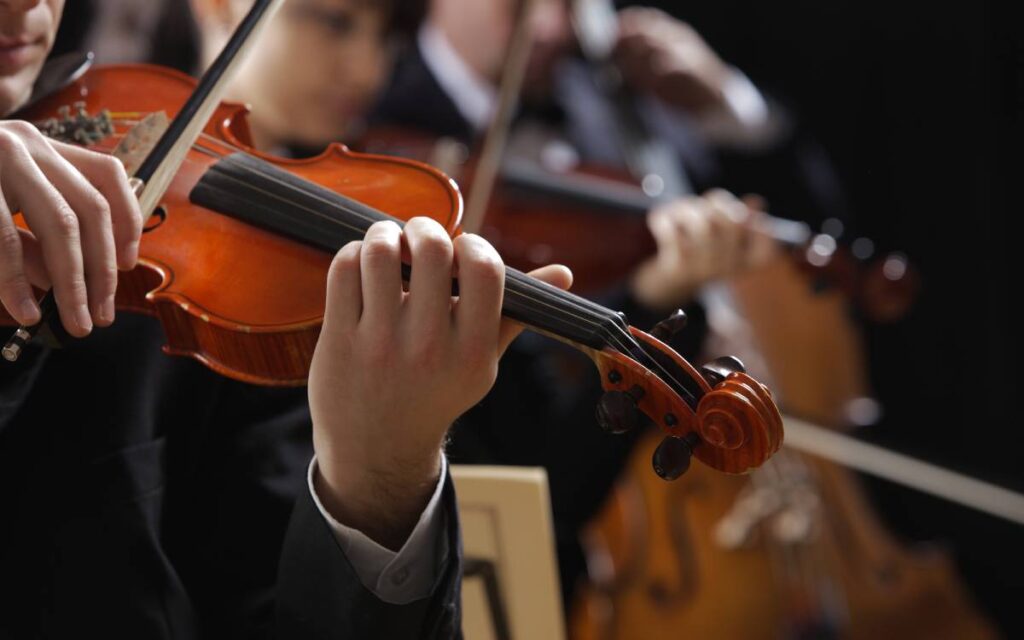
While there are several great instruments that we’ve outlined in this article, there is no one easiest instrument to learn for everyone. You may connect more with a stringed instrument instead of a wind instrument or piano, for example. And ultimately, the easiest instrument for you to learn is going to be the one that you’re motivated to practice.
Will I Have To Learn Music Theory?
Not necessarily. If you have no interest in learning the language of music, ukulele and guitar are probably your best bets. Yet, even on the easiest musical instruments, learning a bit of theory will make you a much better player.
Which Easy Musical Instrument Will Help Me Become a Better Singer?

There are a few options here. Guitar and piano are some obvious choices, as you can practice scales while you sing along to help improve the accuracy of your singing.
Surprisingly woodwind and brass instruments such as the French horn can also help you become a better singer as they help to train your diaphragm.
Am I Too Old to Learn to Play Music?
While it’s true that those at a young age have an advantage, you’re never too old to learn to play an instrument. In fact, learning to play an instrument later in life comes with a range of benefits, and can even help prevent cognitive decline as you age.
What Other Instruments Would You Recommend?

If you don’t like any of the instruments in our top picks, don’t let that stop you! The truth is if you’re motivated enough, you can learn almost any instrument.
The easiest instrument to learn for one person may not ring true for everyone. The best thing to do is just get started.

